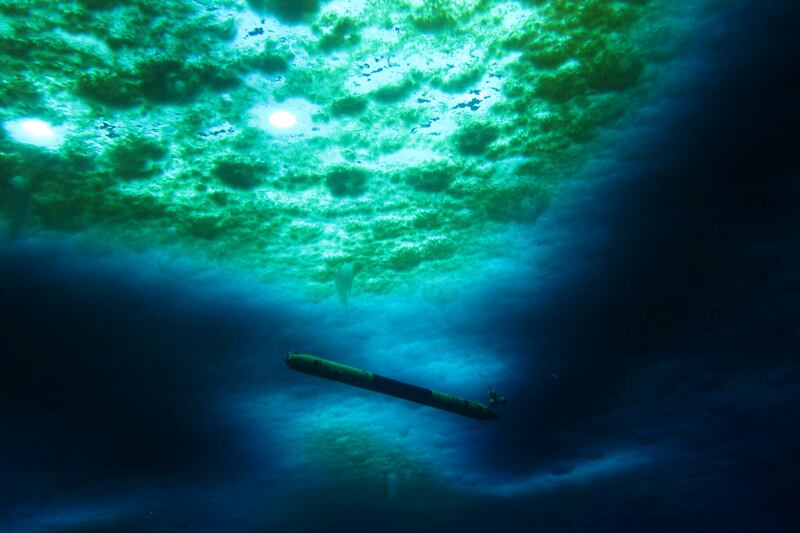Thwaites Glacier in Antarctica — known by its nickname “doomsday glacier,” because of its potential to melt and significantly raise sea levels — is “in trouble,” according to scientists who took a closer look at the glacier using a skinny robot.
Scientists used a 13-foot, pencil-shaped robot to examine the glacier and made new observations about how and where the glacier — which is larger than Florida — is melting, per NPR. The robot was operated by scientists from Cornell, New York University, Pennsylvania State University and the British Antarctic Survey.
Previous studies found that the glacier could collapse within 100 years, and the ice melt from such a collapse would potentially raise global sea level by up to two feet, per NPR.
Thwaites is still at risk of extreme breakup and melting. What the new research shows is “not just how much melting is going on but where and how it’s happening under Thwaites in a very important part of the system,” said Britney Schmidt, an associate professor of earth and atmospheric sciences at Cornell University and lead author of the new study, which was published in the journal Nature, per NBC News.
Scientists had not previously observed hard-to-reach points of the glacier. Using the robot, scientists found that there are crevasses in the ice base where warm water is penetrating the glacier, leading to rapid ice melt. Crevasses or cracks in a glacier are weak points typically formed through stress on or movement of the glacier.
“They’re basically funneling warm water faster than other parts of the glacier system,” Schmidt said, per NBC News. “So, the crevasses are not just weaknesses in terms of cracks in the ice, but they are becoming these giant features, and that process starts right at the grounding line.”
The robot also gave a look at the intricate landscape of the underside of Thwaites. Scientists found staircase-shaped features called terraces, where serious ice melt is occurring and large crevasses are susceptible to collapse, according to the study.
A second study, also published by Nature, was led by Peter Davis with the British Antarctic Survey. In that study, researchers discovered that a layer of freshwater between the bottom glacier and the ocean slows the speed of ice melt. But it does not impact how much ice is breaking free from the glacier and still driving up ocean levels.
“Our results are a surprise but the glacier is still in trouble,” Davis said in a statement, per NBC News. “If an ice shelf and a glacier is in balance, the ice coming off the continent will match the amount of ice being lost through melting and iceberg calving. What we have found is that despite small amounts of melting there is still rapid glacier retreat, so it seems that it doesn’t take a lot to push the glacier out of balance.”


